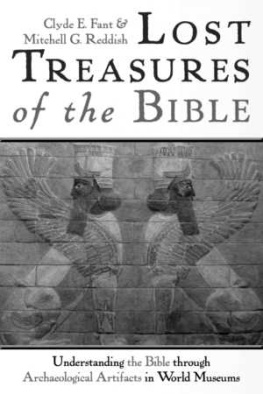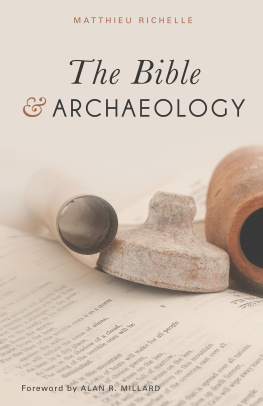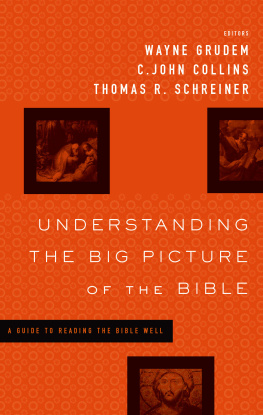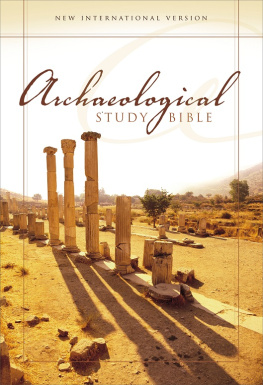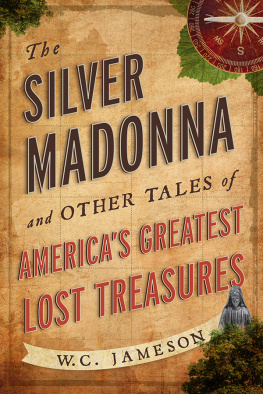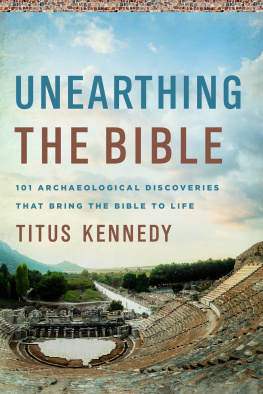Clyde E. Fant & Mitchell G. Reddish



X
xvi
xx
xxii
Maps
i. The Ancient Near East xxvi
2. The New Testament World xxvii
Photographs
1. Fragments of tablet three of Enuma Elish 3
2. Clay tablet (AO 6020) containing portions of the creation myth Enki and the World Order 8
3. Fragmentary copy of tablet one of the Epic of Atrahasis 15
4. Tablet eleven of the Epic of Gilgamesh 17
5. The Weld-Blundell Prism containing the Sumerian King List 23
6. Detail of the figure the "Ram Caught in a Thicket" from Ur 31
7. The Rosetta Stone 34
8. An assortment of Amarna tablets 39
9. Stela depicting Pharaoh Akhenaten with his wife and three daughters 44
io. Panel showing Pharaoh Akhenaten and his family 45
n. Fragmentary clay tablet containing a portion of the Birth Legend of Sargon 49
12. The mummy of Ramesses II 50
13. Mud brick with name of Ramesses II 53
14. Fragments of the tablet containing portions of the Treaty of Kadesh 56
15. Stela containing the Law Code of Hammurabi 6i
i6. Fragmentary clay tablet containing portions of the Law Code of Ur-Nammu 65
17. Tablet A of the Middle Assyrian Laws 67
i8. Clay tablet containing part of the New Hittite laws 69
i9. The Merneptah Stela (or, the Israel Stela) 73
20. Bronze statuette of a calf and a clay model shrine 77
21. A clay Philistine cult stand decorated with figures of musicians 79
22. Stela with a relief of the Canaanite storm god Baal 82
23. Bronze statuette of Baal (AO 11598) 83
24. Cylinder seal with a scene of the gods El and Baal 85
25. Tablet six of the Myths of the Baal Cycle (AO 16636) 88
26. Inscribed stone known as the Gezer Calendar 96
27. The Mesha Stela, also known as the Moabite Stone 98
28. Inscription from Tel Dan mentioning the "House of David" 105
29. A small ivory plaque mentioning King Hazael of Damascus 108
30. Ivory carving from Samaria of a winged sphinx 110
31. Ivory carving from Samaria showing a lion attacking a bull 111
32. Ivory carving from Nimrud with a scene of "the woman at the window" 113
33. The Kurkh Monolith of Shalmaneser III 118
34. The Black Obelisk of Shalmaneser III 120
35. Detail of the Black Obelisk showing King Jehu of Israel offering tribute 122
36. Statue of Shalmaneser III 123
37. Bronze cast of the seal of Shema from Megiddo 125
38. Relief carving showing King Tiglath-pileser III in his chariot and a scene of the captured city of Astartu 127
39. Clay tablet containing the annals of Tiglath-pileser III 132
40. Stone panel with a relief of King Sargon II of Assyria and a high dignitary 134
41. Two winged, human-headed bulls that guarded an entrance of the palace at Khorsabad 136
42. Stone plaque with an epitaph for King Uzziah of Judah 141
43. Stamp seal belonging to Shebnayau, a servant of King Uzziah of Judah 143
44. Inscription commemorating the completion of Hezekiah's Tunnel 146
45. Large horned altar from Beer-sheba for burnt offerings 149
46. Incense stands from the sanctuary at Arad 152
47. Inscription from the tomb of Shebna at Silwan 155
48. The Taylor Prism, which describes Sennacherib's siege of Jerusalem 159
49. Inscription from under a bull statue mentioning Hezekiah's tribute payment to Sennacherib 165
5o. Relief panel showing prisoners from Phoenicia or Palestine playing lyres 170
51. Detail of a relief panel depicting Sennacherib's assault on the city of Lachish (ME 124906) 175
52. Stela showing King Esarhaddon of Assyria with two captives 177
53. Stela depicting King Ashurbanipal carrying a ceremonial basket of earth 182
54. Relief of King Ashurbanipal and his queen in his garden, sometimes called the "Garden Party" (ME 124920) 186
55. Ashurbanipal in his chariot on a lion hunt (ME 124866-ME 124868) 187
56. Clay tablet from Nineveh that mentions King Gyges of Lydia 191
57. Clay cylinder commemorating Nabopolassar's rebuilding of the inner wall of Babylon 193
58. Babylonian Chronicle 3, which covers the years 616-609 B.C.E. and tells of the fall of Nineveh 196
59. Nebuchadnezzar's Ishtar Gate at Babylon 200
6o. Ostracon found at Arad (letter 18) addressed to Elyashib that mentions the "house of Yahweh" 206
61. Babylonian Chronicle 5, covering the years 605-595 B.C.E., which mentions the capture of Jerusalem in 597 B.C.E. 209
62. Front and back sides of ostracon 4 found at Lachish 215
63. Clay tablet listing rations for King Jehoiachin and his sons, captives in Babylon 219
64. Tablet containing a portion of the Sumerian Lamentation over the Destruction of Ur 223
65. Babylonian Chronicle 7, known as the Nabonidus Chronicle 229
66. Basalt stela of Nabonidus in the British Museum (ME 90837) 231
67. Clay foundation cylinder belonging to Nabonidus of Babylon 233
68. Clay tablet from Ras Shamra containing part of the Legend of Aqhat 236
69. Fragments of a clay tablet containing a collection of Sumerian proverbs 241
70. Fragmentary tablet with a portion of the text of The Instructions of Shuruppak 246
71. Tablet containing the Sumerian love poem "Bridegroom, Spend the Night in Our House till Dawn" 247
72. Stela of Amenmose with the text of The Great Hymn to Osiris 251
73. Clay tablet with part of the text of the Dialogue between a Man and His God 256
74. Clay tablet from Nineveh containing a portion of "the Babylonian Job" 260
75. The Cyrus Cylinder, which contains a description of Cyrus returning captives to their homelands 267
76. Frieze made of glazed bricks from the palace at Susa showing a group of archers (AOD 488) 272
77. Part of a column capital shaped like a human-headed bull, from Persepolis 277
78. Fragment of a vase with the name of Xerxes I in hieroglyphics, now in the Louvre (Sb 54) 279
79. A silver bowl inscribed with the name of Artaxerxes I, now in the Freer Gallery of Art 281
80. Base of a column from Susa containing the name of Artaxerxes II 284
81. Marble statue of Alexander the Great in the Archaeological Museum in Istanbul 290
82. A sculpture of the head of Alexander the Great found at Pergamum 292
83. Marble head of Antiochus IV Epiphanes 294
84. Silver tetradrachma containing a likeness of Antiochus IV 295
85. Upper portion of a bronze statue of Augustus on a horse 300
86. Marble bust of Emperor Tiberius 303
87. Silver denarius bearing the image of Tiberius 304
88. The remains of the "Galilee Boat" 309
89. Limestone slab from Caesarea mentioning Pontius Pilate 313
90. Limestone ossuary of Caiaphas 317
91. Heel bone, pierced by a large nail, from a victim of crucifixion 319
92. Ossuary belonging to Simon, "builder of the temple" 322

